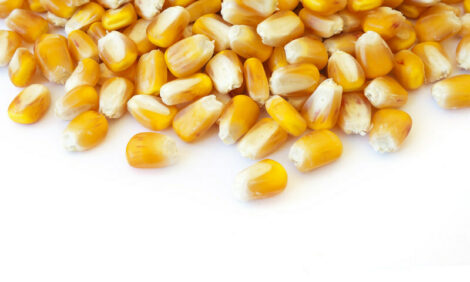



N-3 Fatty Acids In Sow Diets
By Theo Van Kempen, Swine Nutrition Specialist, North Carolina State University - Omega-3 fatty acids have received considerable attention in recent years in both human and pet nutrition. Infant formulas are now supplemented with such fatty acids for stimulating brain development. Pet foods also contain various ratios of omega-3 and omega-6 fatty acids to aid, among other things, in maintaining a healthy immune system.
 Dr Theo van Kempen Swine Nutrition Specialist |
In sow nutrition, though, little attention has been paid to these fatty acids. NRC (1998) has recommended levels for omega-3 fatty acids, but concludes that typical diets contain adequate levels of these fatty acids.
At the 64th Minnesota Nutrition Conference of 2003, John Rooke of the Scottish Agricultural College provided an overview of data on the use of omega-3 fatty acids in sow diets. The following is a summary of his proceedings:
Omega-3 fatty acids include linolenic (18:3 n-3), eicosapentanoic (20:5 n-3), and docosahexaenoic acid (22:6 n-3). Omega-6 fatty acids include linoleic (18:2 n-6) and arachidonic acid (20:4 n-6). The numbers in parentheses, e.g., 18:3 n-3, refer to the number of carbons in the fatty acids (18), the number of double bonds (3), and the starting position of the double bonds (n-3 refers ot the third carbon from the tail of the fatty acid, also referred to as omega-3 [omega is the last atom, minus 3]).
Figure 1: Docosohexaenoic acid or 22:6 n-3

Typically, the 18 carbon varieties are found in the diet, and from these longer-chain acids and other products are produced that have profound biological effects. Although linolenic and linoleic acids require the same enzymes for conversion into longer-chain essential fatty acids, omega-3 and omega-6 fatty acids cannot be inter-converted. The first limiting enzyme in this pathway is delta-6 desaturase. Implications of the use of the same sets of enzymes are (1) the original rate of omega-3/omega-6 fatty acids largely determines the ratio of end products produced, and (2) competition exists between very long (24 carbon) and long-chain (18 carbon) fatty acids for these enzymes, which may compromise the production of very long-chain omega fatty acids. These pathways are not present in the fetus, implying that the unborn piglet is dependent on maternal supplies.
These fatty acids play an important role in cell membranes. Deficiencies can lead to changes in brain function, impaired vision, and the fertility of sperm. These fatty acids also are the precursors for prostaglandins and eicosanoid mediators, which play an important role in reproduction and immunity. New research also suggest that these compounds play a role in gene expression, through which route liver function is affected.
Cereal-based swine diets are typically low in omega-3 fatty acids and relatively high in omega-6, leading to ratios of 1:10 or higher (Table 1). In human nutrition, such ratios are considered imbalanced. To correct these ratios, products like flaxseed oil, fish-oil (especially tuna oil), or products derived from these sources can be used.
| Table 1: Omega-6 and omega-3 fatty acid content of common feed ingredients (percent of total fatty acids) | |||
| 18:2 n-6 | 18:3 n-3 | n-6/n-3 ration | |
| Corn | 50.5 | 0.9 | 50 |
| Wheat | 56.3 | 3.7 | 15 |
| Soybean meal | 51.5 | 7.3 | 7.1 |
| Flaxseed | 15.0 | 53.1 | 0.3 |
Few studies have (properly) evaluated the effects of omega-3 and omega-6 fatty acids on embryonic and fetal survival in swine. Rooke quoted a study by Rigau et al. (1995), which showed an improvement in live fetuses, relative to corpora lutea, of 68 vs. 63% due to feeding menhaden oil. Webel et al. (2003) supplemented diets with n-3 fatty acids throughout lactation to 7 days postweaning, and they observed a significant increase in pigs born alive in the subsequent litter (10.8 vs. 10.3).
Rooke focused his research on improving piglet survival through impacting brain development in utero. His research showed that by supplementing omega-3 fatty acids starting at day 60 of gestation, the fatty acid content in the brain and the retina could be altered. This effect was much stronger with orbital (tuna) oil containing mainly 22:6 n-3 than with flaxseed oil containing mainly 18:3 n-3. The optimum dose of flaxseed oil was found to be around 6 g/sow/day of 20:5 n-3 and 22:6 n03 together; too high a dose had negative effects on brain development.
From a production standpoint, brain development does not seem a very important parameter. However, Rooke observed in his studies that piglets from sows supplemented with marine oils were more active after birth, exhibited more udder-seeking behavior, and, most importantly, were heavier at weaning. He thus pursued the issue by evaluating effects on reproductive performance in a large-scale trial. Sows were either fed a diet containing vegetable oil or salmon oil (16.5 g/kg feed, with approximately 100 sows per treatment). This trial showed that the supplementation resulted in longer gestation lengths, slightly smaller pigs at birth, but also lower pre-weaning mortality (Table 2). The reduction in mortality was due to a reduction in crushing and starvation, in line with the observations of Rooke that treated piglets were more eager to nurse. Weaning weight was not affected by treatment.
| Table 2: Reproductive performance as affected by fatty acids | |||
| Vegetable Oil | Salmon Oil | P value | |
| Gestation length, d | 115.4 | 115.9 | < 0.001 |
| Total born/litter | 11.8 | 11.6 | NS |
| Birth weight/pig, kg | 1.54 | 1.47 | < 0.05 |
| Litter birth weight, kg | 18.0 | 17.7 | < 0.10 |
| Preweaning mortality, % | 11.7 | 10.2 | < 0.05 |
In a more recent study, feeding 22:6 n-3 from an algal source during gestation tended to reduce pre-weaning mortality and improve pre-weaning weight gains. Feeding 22:6 n-3 during lactation also increased weaning weights. Baidoo et al. (2003) also showed that supplementing sows during gestation and lactation with flaxseed oil (at 5 percent) resulted in larger litters, heavier piglets at birth and at weaning, and lower pre-weaning mortality.
The data obtained are an indication that reproductive performance may be improved by altering the ratio of omega-3 to omega-6 fatty acids. The data, though, are not yet clear on the inclusion level, on the type of fat that should be used, or on the economics.
Source: North Carolina State University Swine Extension - October 2003









